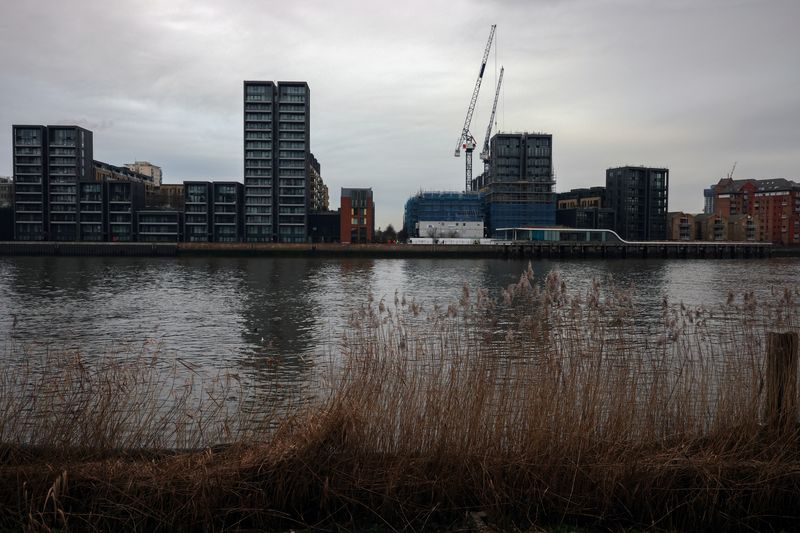UK construction activity falls by most in over two years – PMI
2022.08.04 11:45

A general view of apartments under construction near Wandsworth Bridge in London, Britain, January 10, 2022. REUTERS/Kevin Coombs
By David Milliken
LONDON (Reuters) – British construction companies reported their biggest fall in activity in more than two years last month, as house-builders scaled back work and civil engineering firms faced a dearth of new contracts, a survey showed on Thursday.
July’s S&P Global/CIPS construction Purchasing Managers’ Index (PMI) also showed some easing in inflation pressures – but likely comes too late to influence the Bank of England, which economists expect to raise interest rates by half a percentage point later on Thursday.
The headline construction PMI sank to 48.9 in July from June’s 52.6, its lowest since May 2020 during the COVID-19 pandemic slump and only the second time since then that it has been below the 50-level that separates growth from contraction.
Economists polled by Reuters had expected the index to remain broadly steady at 52.0. The most recent official data showed construction output had grown by 4.7% in the year to May.
“Cost of living pressures, higher interest rates and increasing recession risks for the UK economy are taking a toll on construction activity,” S&P Global (NYSE:SPGI) Market Intelligence economics director Tim Moore said.
The all-sector PMI, which includes data for the much larger services and manufacturing sectors released earlier this week, fell to 51.8 in July from 53.6 in June, its lowest since February 2021.
British consumer price inflation hit a 40-year high of 9.4% in June, and some economists think it could reach 15% early next year as energy prices continue to surge.
The PMI showed construction materials costs rose by the smallest amount since March 2021 as prices for steel and timber fell, but continued labour shortages put upward pressure on wages and acting as a barrier to growth.
House-builders said economic uncertainty was causing them to put a brake on new projects, while civil engineering contractors were struggling to find new projects once existing ones were done. Commercial work – such as refitting restaurants and offices – remained strong, however.








